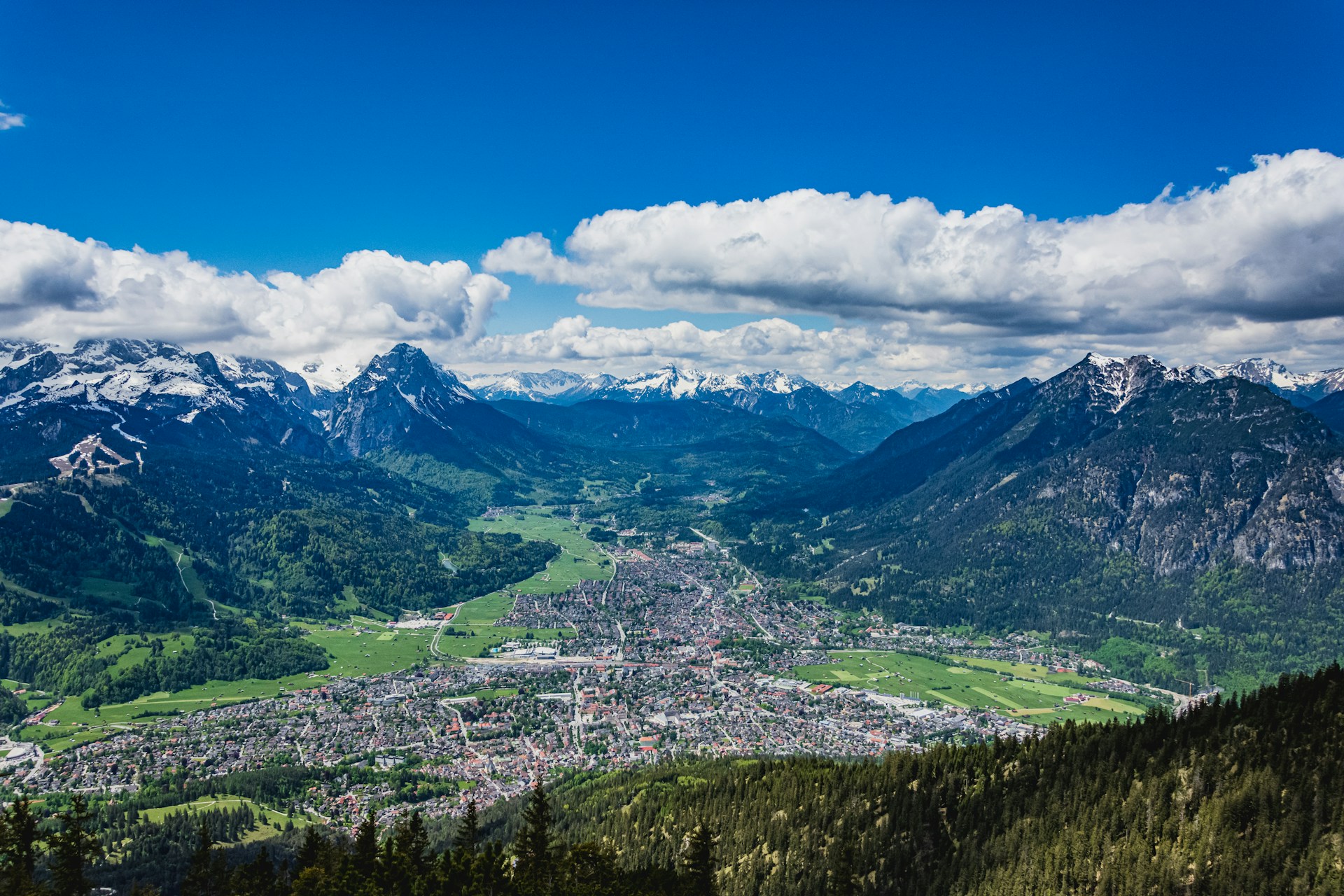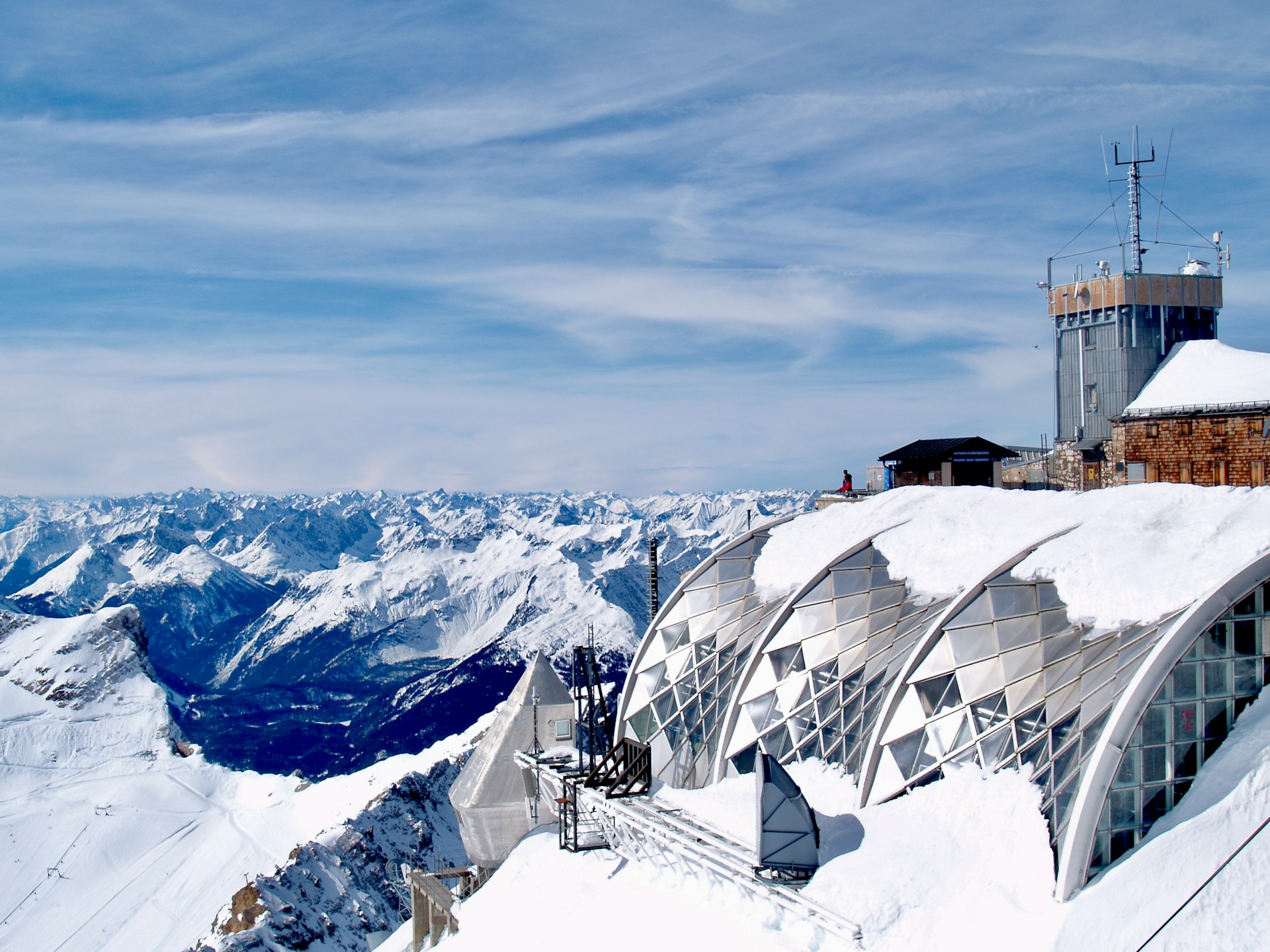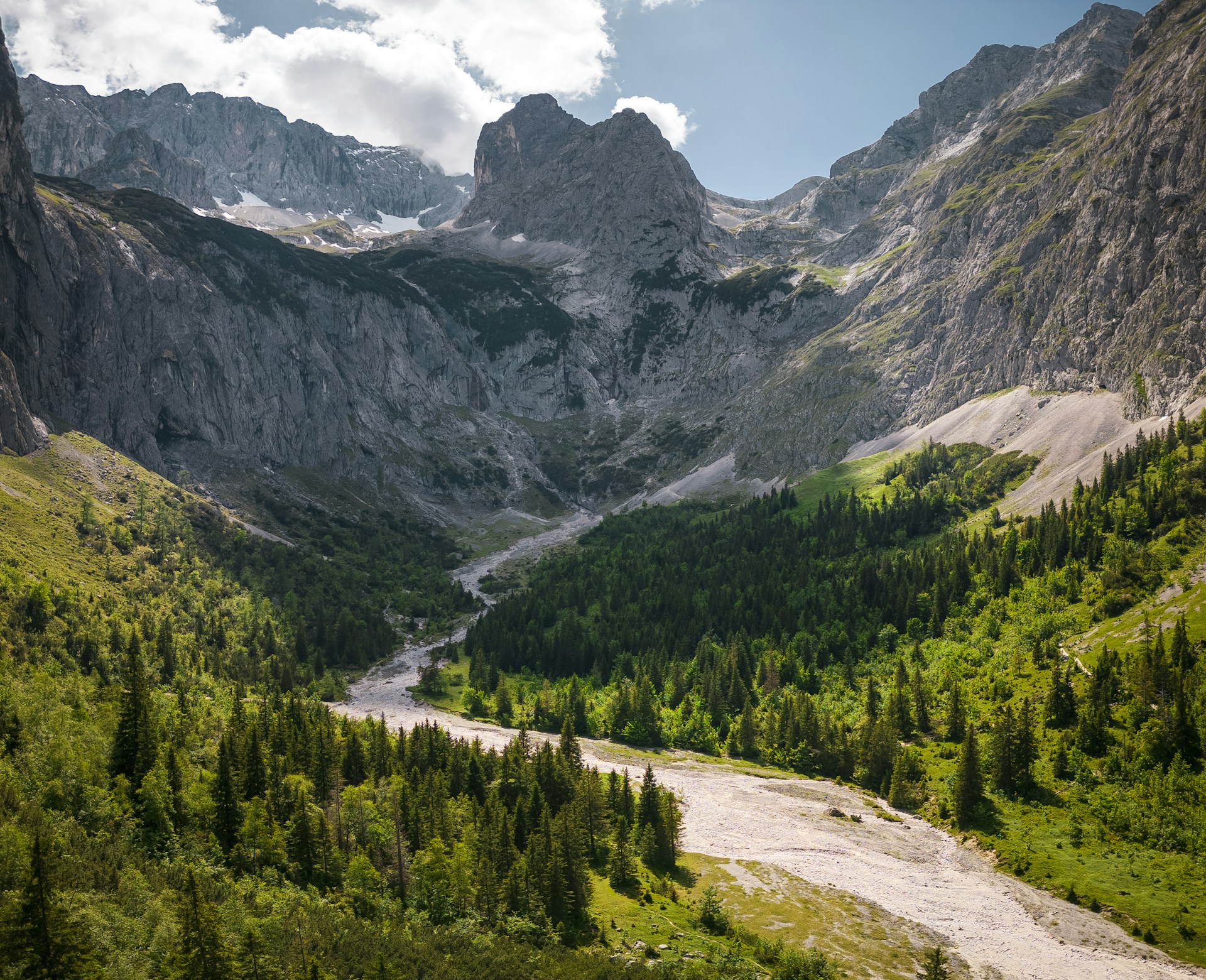Hikers and outdoor enthusiasts will find a mountain paradise in the southern German Bavarian Alps. With its charming villages, verdant valleys, and towering peaks, the region offers a unique blend of historical significance, scenic beauty, and cultural allure. Join us as we explore the history, famous mountain peaks, and hidden trails of the Bavarian Alps.

Garmisch Partenkirchen in the Bavarian Alps (photo: Sandra Grünewald)
1. Historical Background
Ancient Times
The Bavarian Alps have a rich history, with early habitation sites dating back to Celtic groups. During the Conquest, they were integrated into the Roman Empire, constructing cities, highways, and forts. The Alps significantly shaped the region's cultural landscape, leaving a legacy of artifacts and cultural effects.
Medieval Era
During the Middle Ages, the Bavarian Alps experienced the growth of cities and trade routes, playing a crucial role in regional politics and wars. Castles, fortifications, and towns like Füssen and Garmisch-Partenkirchen served as strongholds during the conflict. The emergence of regional folklore and stories added a mysterious quality to the area's past.
Modern History
The Bavarian Alps have undergone significant changes due to world wars and economic shifts, but they remain a favored vacation spot due to their breathtaking landscape and diverse outdoor activities. Despite the socioeconomic changes, they remain a popular destination for adventure, culture, and history.
2. Iconic Peaks

View from the top of Zugspitze (photo: Peter Burdon)
Zugspitze
Zugspitze, Germany's tallest mountain, stands at 9,717 feet (2,962 meters) and offers breathtaking vistas of the Alps. Visitors can reach the peak via the challenging Höllental path, crossing glaciers and passing through gorges. The summit also offers year-round activities like hiking, climbing, and skiing, allowing visitors to enjoy the expansive Alps spanning Germany, Austria, and Switzerland.
Watzmann
Mount Watzmann, Germany's third-highest mountain, is known for its tragic past and unusual silhouette. Its 8,900-foot (2713-meter) ridge is a popular destination for climbers and hikers, offering breathtaking views and a sense of achievement. The mountain's association with legends of a cruel king and his family turning to stone adds a sense of mystery.
Alpspitze
Another famous mountain in the Bavarian Alps is the Alpspitze, which has a distinctive pyramidal form. Climbers of all skill levels go to the well-known Ferrata trail, the Alpspitze Ferrata. This path offers an exciting combination of trekking and climbing, with ladders and steel wires helping with the ascent. A favored spot for outdoor enthusiasts, the summit rewards hikers with expansive views of the surrounding mountains and valleys.
Kehlstein Mountain
A peak rich in history, Kehlstein Mountain is home to the well-known Eagle's Nest and has breathtaking views. Constructed initially as Adolf Hitler's getaway, the Eagle's Nest, or Kehlsteinhaus, is today both a historical landmark and a restaurant.
While taking in the expansive vistas of the Alps, visitors can delve into the region's historical significance. Band of Brothers Tours offers an exceptional way to fully experience the rich history of Kehlstein Mountain, combining breathtaking scenery with captivating storytelling. The Eagle's Nest hike provides a blend of natural beauty and history, with many paths catered to varying degrees of difficulty.
3. Hidden Trails

Hell Valley (photo: Joshua Kettle)
Partnach Gorge (Partnachklamm)
A hidden jewel in the Bavarian Alps, Partnach Gorge, also known as Partnachklamm, is renowned for both its visual beauty and geological significance. The Partnach River sculpted this tiny valley, which presents a breathtaking show of waterfalls, rapids, and rock formations. The finest seasons to visit are spring and summer, when the river is fed by melting snow and has a tremendous flow. Walkers of all ages may utilize the well-maintained route that winds through the gorge.
Höllentalklamm
The Hell Valley Gorge, also known as Höllentalklamm, is an exciting journey through craggy and spectacular scenery. Alongside the raging Höllental River, the trail crosses bridges and passes through tunnels. Preparation is essential for this climb because the terrain may be difficult, particularly after rain. It takes a strong spirit of adventure, waterproof clothes, and sturdy shoes to explore this breathtaking gorge.
Reintal Valley
The Reintal Valley offers a serene getaway into nature for people looking for serenity and less busy trails. This picturesque valley is renowned for its verdant meadows, crystal-clear streams, and abundant wildlife. All ability levels may enjoy the moderate stroll in the Reintal Valley. You can stop and take in the beauty of the surrounding countryside and see various animals, including deer and other bird species.
4. Practical Tips for Backpackers
Best Seasons to Visit
The best time to visit the Bavarian Alps depends on your chosen activities. Summer months are ideal for hiking, climbing, and scenic views. Winter is ideal for skiing and snowboarding. Fall and spring offer changing foliage and avoid crowds. Each season has unique highlights, so plan accordingly.
Gear and Preparation
For a backpacking trip in Europe to be successful, the right equipment and planning are necessary. Essential items include waterproof gear, layered clothes, and sturdy hiking boots. Depending on the season, you may additionally require gear like ice axes and crampons for winter walks. Before leaving, always check the trail conditions and weather predictions. Don't forget to pack enough food and drink, a map, and a compass.
Accommodation Options
Finding the best accommodation for your backpacking adventure is crucial before heading out. The Bavarian Alps offer various lodging options for different tastes and budgets. Mountain huts, known as Hütten, provide a rustic experience in picturesque settings. Camping sites are available throughout the area, while guest houses and motels near hiking paths in Berchtesgaden and Garmisch-Partenkirchen offer a more comfortable stay.
Local Culture and Etiquette
Respecting local culture and etiquette is essential when backpacking in the Bavarian Alps. Interacting with locals can enhance your experience, as they often have valuable insights and stories to share. Learn a few basic German phrases to facilitate communication and show respect. Additionally, always follow Leave No Trace principles to minimize your environmental impact. Respect wildlife, stay on marked trails, and carry out all waste.
_____
This story is published in partnership with Band of Brothers Tours.

No comments:
Post a Comment